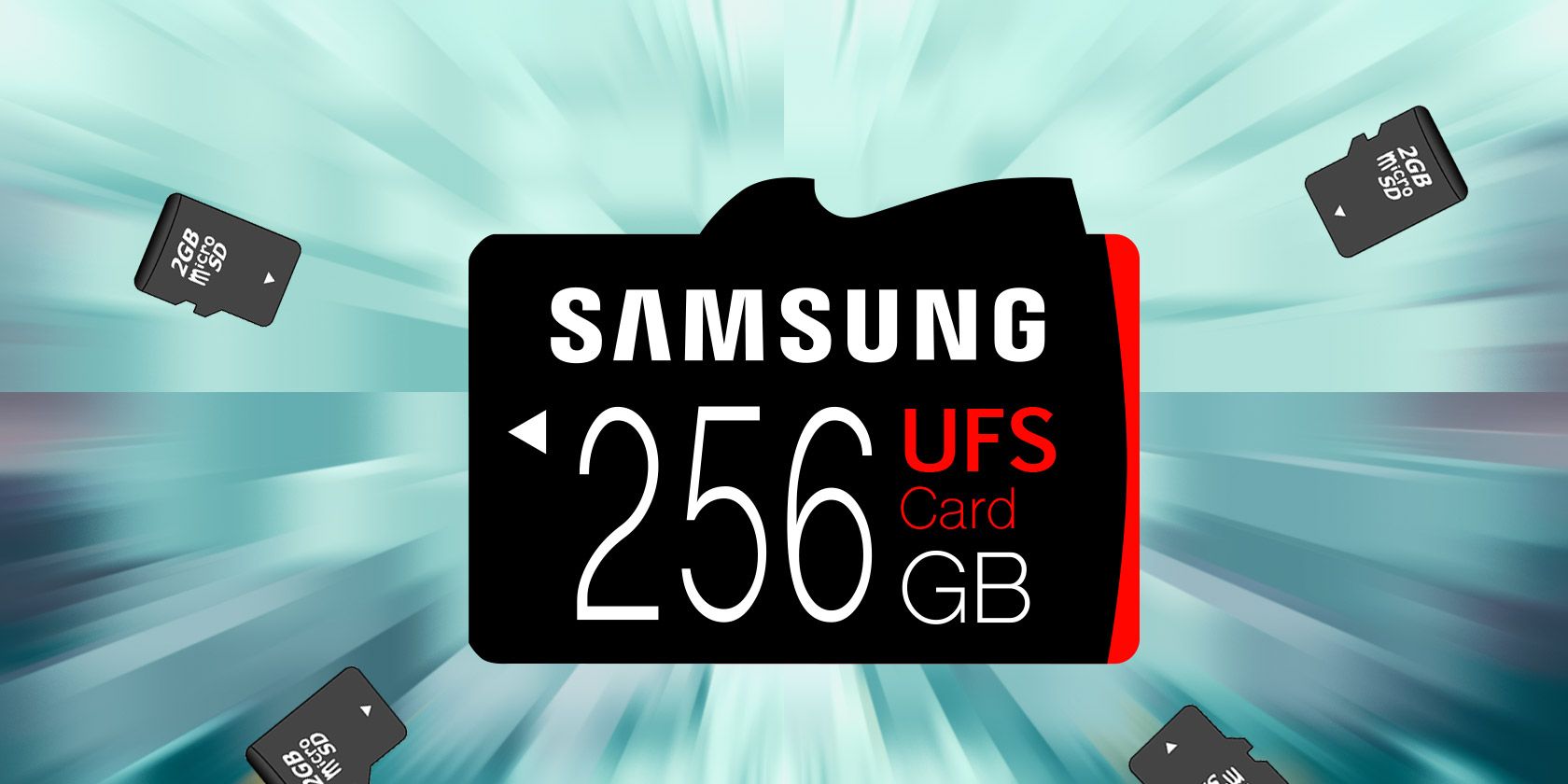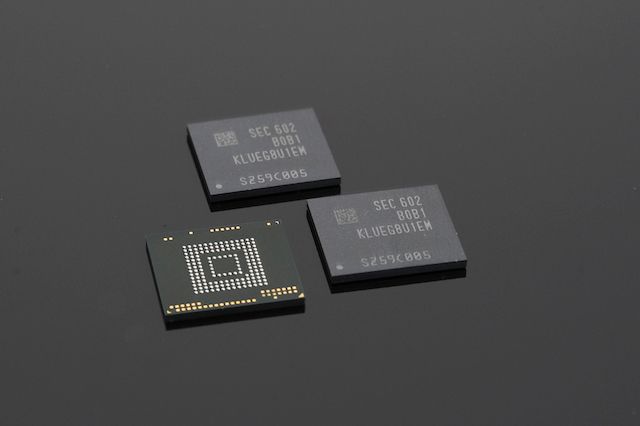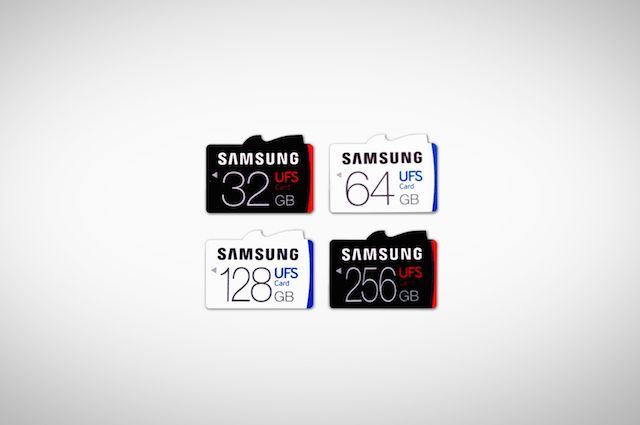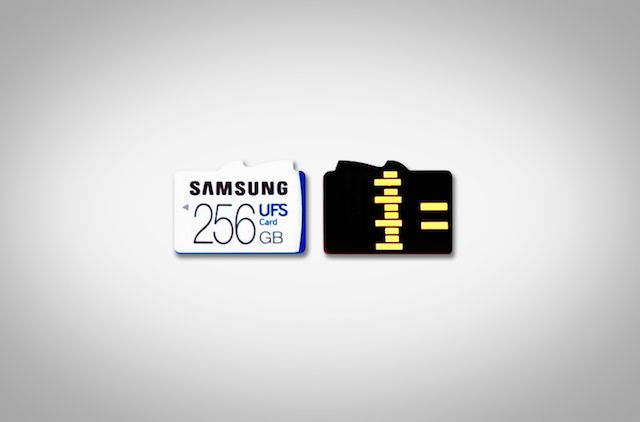If you've got gadgets that use external storage, it's always important to buy the right card for the job. But for the most demanding tasks, it isn't always possible to find a card that's big enough or fast enough for your needs.
That could be about to change. Samsung has recently launched some new high-capacity memory cards based on the new Universal Flash Storage (UFS) standard, which promises speeds that are up to five times faster than high-end microSD cards.
Sounds great! But how is it so fast? And what's the catch? Let's explore.
What Is UFS, Exactly?
UFS is a new flash storage standard for consumer electronics devices. It's designed as a next-generation replacement for eMMC (which is used for internal storage in devices like smartphones and tablets) and SD cards (which are used as external storage by smartphones, DSLRs, etc).
The standard is supported by a host of major tech companies, including Samsung, Toshiba, Micron, and Texas Instruments.
The latest version of the UFS spec -- UFS 2.0 -- could potentially deliver speeds that rival solid state drives. They're certainly faster than eMMC and considerably faster than both SD and microSD cards.
Samsung's internal chips based on this spec include a sequential read speed of up to 850 MB/s -- compared to about 550 MB/s in a typical SSD -- and are capable of 40,000 input/output operations per second (IOPS), compared to 13,000 in the latest eMMC products.
Some difference, isn't it?
In addition, UFS is more power efficient than eMMC storage. It uses 10% less power when in use and 35% less in daily workload performance.
UFS was used for the internal storage in Samsung's Galaxy S6, S7, and Note 5 smartphones. Samsung has also introduced the first UFS memory cards, with other manufacturers likely to follow in the coming months.
The Benefits of UFS Memory Cards
Samsung's first range of UFS memory cards are based on the older UFS 1.0 spec. Yet even so, they still offer a number of advantages over microSD cards.
For starters, the standard sizes have larger capacities. Samsung's UFS cards start at 32 GB and increase to 256 GB while microSD cards typically max out at 128 GB. Samsung has only recently begun shipping its first 256 GB microSD in the EVO+.
They also have the speed benefits of internal storage. The EVO+ cards promise read speeds of up to 95 MB/s and write speeds of up to 90 MB/s. Indeed, the 256 GB UFS card has read speeds up to 530 MB/s -- more than five times faster -- and almost twice the write speeds at 170 MB/s.
The faster write speeds are ideal for applications where very large amounts of data are recorded in a short space of time. This includes shooting 4K video (and 8K when the time comes), 360-degree video for VR content, or multiple high resolution RAW images on a DSLR.
The small size is also perfect for mobile devices like drones and action cameras.
The faster read speeds will significantly decrease the amount of time taken to copy that content to a computer (assuming that the computer and the connection to it are fast enough), as well as previewing it within the device, browsing thumbnails, etc.
There could be benefits for smartphone users, too. The slow and inconsistent performance of SD cards meant that external storage was never a great fit for apps. But with UFS cards having "internal storage" speeds -- plus lower latency and power consumption -- it may be possible to run apps right off the card with no adverse effects.
All of these stats relating to the speed of UFS refers to the theoretical capabilities of the technology, or in other words, performance under lab conditions. Until the cards start being mass produced and used in the real world, we can't say with any certainty whether it'll live up to the promises.
That being said, benchmark tests of the UFS memory used in the Galaxy S6 and S7 devices can give us an idea of what to expect. The data shows that they are significantly faster than Android devices using eMMC storage when reading and writing large files.
In random tests, where smaller files are constantly read or written, the difference is less pronounced -- performance is only on a par with other devices. The anomaly in these tests is the iPhone 6s, which uses neither eMMC or UFS storage.
The Downside of UFS Memory Cards
We'll have to wait and see whether UFS memory cards live up to the hype. And that's currently their biggest downside -- there are currently no devices that support them.
Even if Samsung chooses to include a UFS slot in the upcoming Note 7 smartphone, adoption throughout the industry will be much slower. There's enough industry support to help it, and demand for larger and faster cards is only going to increase, especially in prosumer devices.
But while UFS cards are of similar size to microSD, the two are not compatible. They don't share the same form factor, and, more crucially, have a different pin configuration. Samsung has reportedly designed a single slot that can hold both cards, telling one Android enthusiast site,
The new UFS cards are not compatible with the current microSD card socket. However, we have developed a socket design that can support both UFS cards and microSD cards. We are working with different partners in the industry on this integration for next-generation devices.
But the fact remains that the widespread adoption of new standard takes time, especially when it is replacing something that is already very well established, as SD and microSD are.
Is UFS the Standard of the Future?
On paper, UFS memory cards have the potential to completely replace the SD card, and serve our never-ending need for more -- and faster -- storage.
It won't happen overnight though. Samsung has not yet said when the cards will be available, or how much they will cost, and there's still no devices to use them in. So, exciting as it may be, don't throw away your microSD cards just yet.
What do you think of UFS memory cards? Do you need a faster card? Will you be buying one? What gadgets do you think they would benefit most? Sound off in the comments below!
Image Credits: UFS and Galaxy S7 images via samsung.com, GoPro via Andreas Kambanis






